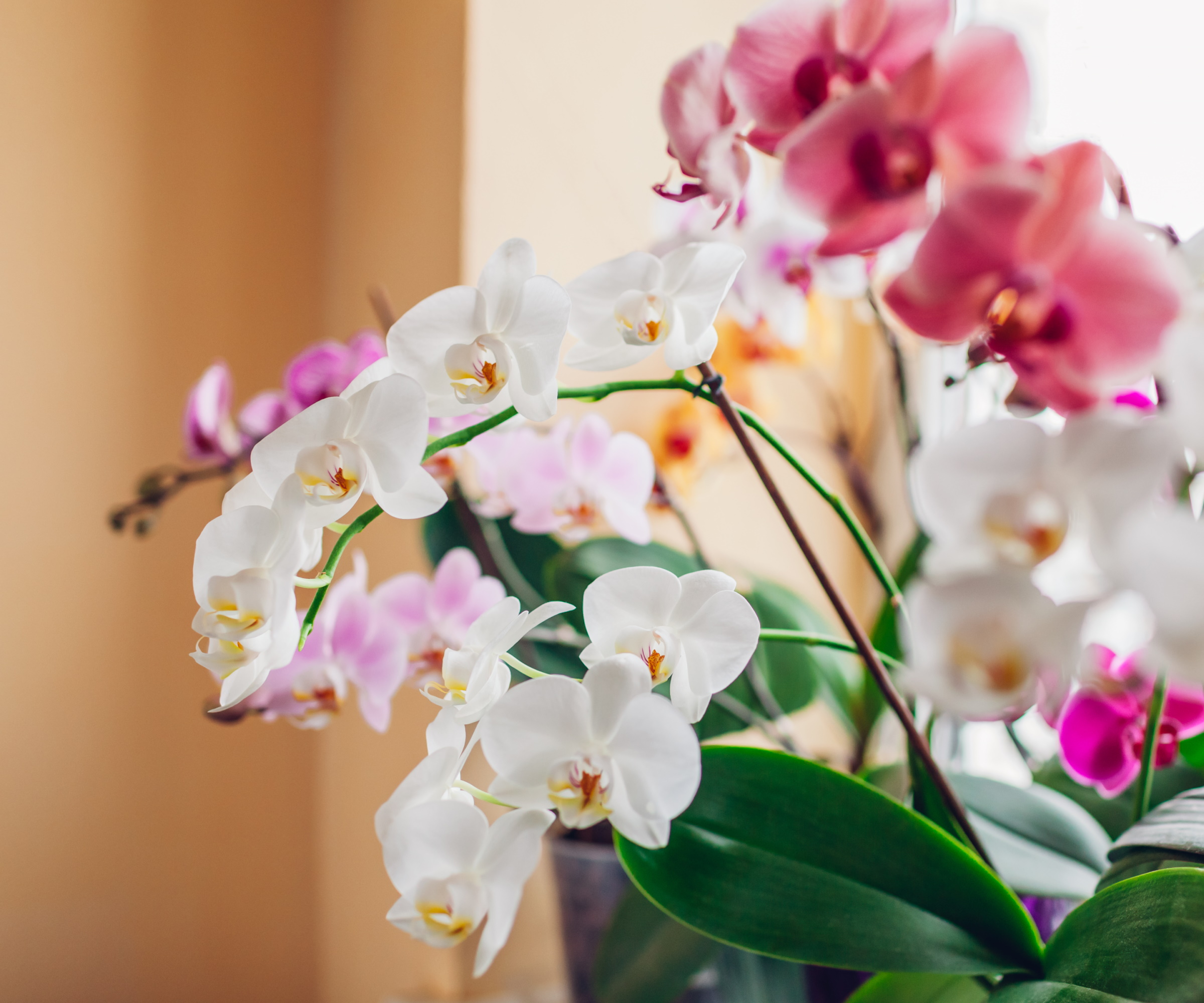My orchid's leaves haven't wrinkled since moving it to this exact spot in my home – it's the easiest hack to keep these flowering houseplants hydrated
Dehydrated orchids can perk up again in the environment of a bathroom


National Orchid Day on 16 April provides the perfect opportunity for plant parents to share all their tips and tricks for keeping orchids happy. These exotic flowering houseplants are undeniably one of the most sophisticated plants to have in the home, but they equally can also be difficult to care for. That's why it's a common occurrence to spot wrinkled orchid leaves.
This has certainly been the case when caring for orchids in my home. I have multiple moth orchids in my large houseplant collection and have seen all problems from yellowing stems, to flowers falling off early, and wrinkled orchid leaves. However, I found the easiest hack to prevent orchid leaves from wrinkling - I moved my plants to the bathroom.
Of course, it makes sense why this would work. Wrinkled orchid leaves are usually a sign of dehydration, so placing an orchid somewhere humid can help keep it hydrated. Here's how this one simple move has stopped my orchid leaves from wrinkling.
How I stopped my orchid leaves wrinkling

One of the key things in an orchid's optimal growing environment is plenty of bright light. For this reason, I previously positioned my moth orchids on a bright windowsill. It did work for a while, as my orchids would bloom for a long time.
However, I soon noticed wrinkled orchid leaves. In some cases, my orchid leaves also turned yellow, soon followed by my orchids witling.
There are a few things that can cause wrinkled orchid leaves, but the main one is dehydration. More specifically, a lack of humidity.
These tropical indoor plants thrive in humidity levels of 40-70%, but will generally tolerate lower. However, to get an orchid to bloom for longer, you should aim to provide higher humidity and take care not to under or overwater orchids.
Design expertise in your inbox – from inspiring decorating ideas and beautiful celebrity homes to practical gardening advice and shopping round-ups.
To meet these needs, I had been using a plant mister (from Amazon) to give my orchid a regular spritzing. I likewise have grown them on a pebble tray for plants (like this pebble tray from Amazon) to keep humidity levels up.
The issue with these methods to increase humidity for indoor plants, though, is that it needs to be quite constant to be super effective. Like many plant parents, I don't have the capacity to mist my plants as much as I would like to.
So, I took a different approach. I moved my orchids to my bathroom - the most humid spot in my house. I placed it right next to my shower, so it would get exposure to higher moisture daily.
Ever since, I haven't had one wrinkled orchid leaf. Growing orchids as bathroom plants allows them to grow in an environment most similar to their native habitat, where they are more hydrated than in a drier spot of the home.
I have found that my orchid leaves stay plump and glossy in my bathroom, plus I'm watering my orchids less often because they're drying out much more slowly than when I grew them on a warm, sunny windowsill.
Other reasons for wrinkled orchid leaves

While dehydration is the main culprit behind wrinkled orchid leaves, it isn't the only reason. This is especially true if your orchid leaves are yellow and wrinkled, indicating potential orchid root rot.
This occurs when incorrect orchid watering happens, oversaturating roots and often resulting in the demise of orchids.
To fix this problem, prune orchid leaves and rotted roots off (with these pruning snips from Amazon) and adjust your watering frequency going forward. You only need to top up water when roots start to look silver rather than green.
Another cause behind wrinkled orchid leaves is common houseplant pests. Things like thrips and mealybugs can weaken orchids, resulting in dehydration and the orchid's death.
To avoid this, regularly check your orchid leaves for pests, especially on the undersides of leaves. You can also clean houseplant leaves to reduce the likelihood of pest problems.
FAQs
Can wrinkled orchid leaves recover?
It is possible for wrinkled leaves to recover, depending on how far the problem has escalated. If it's a dehydration issue and the orchid has a healthy set of roots, improved watering and increased humidity can result in leaves recovering. However, if wrinkled orchid leaves are a symptom of root rot and they have turned yellow, it is unlikely they will recover and will need to be cut off.
If your wrinkled orchid leaves are accompanied by orchid flowers falling off, it's a sign that there could be a few things wrong in your orchid's growing environment. Try moving it elsewhere in your home, like I did, and adjusting things like watering and even fertilizing to improve the health of your plant. Doing so is even likely to lead to your orchid reblooming.

Tenielle is a Gardens Content Editor at Homes & Gardens. She holds a qualification in MA Magazine Journalism and has over six years of journalistic experience. Before coming to Homes & Gardens, Tenielle was in the editorial department at the Royal Horticultural Society and worked on The Garden magazine. As our in-house houseplant expert, Tenielle writes on a range of solutions to houseplant problems, as well as other 'how to' guides, inspiring garden projects, and the latest gardening news. When she isn't writing, Tenielle can be found propagating her ever-growing collection of indoor plants, helping others overcome common houseplant pests and diseases, volunteering at a local gardening club, and attending gardening workshops, like a composting masterclass.
You must confirm your public display name before commenting
Please logout and then login again, you will then be prompted to enter your display name.